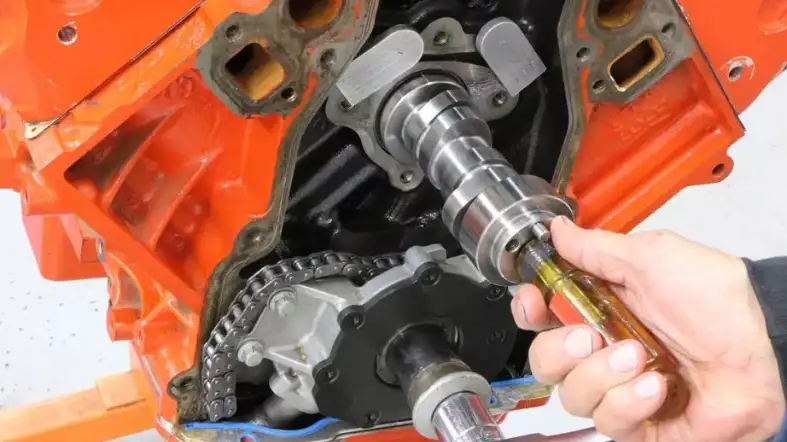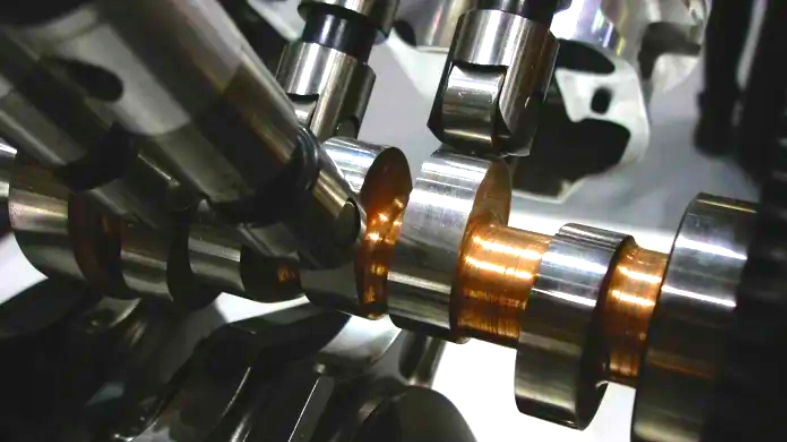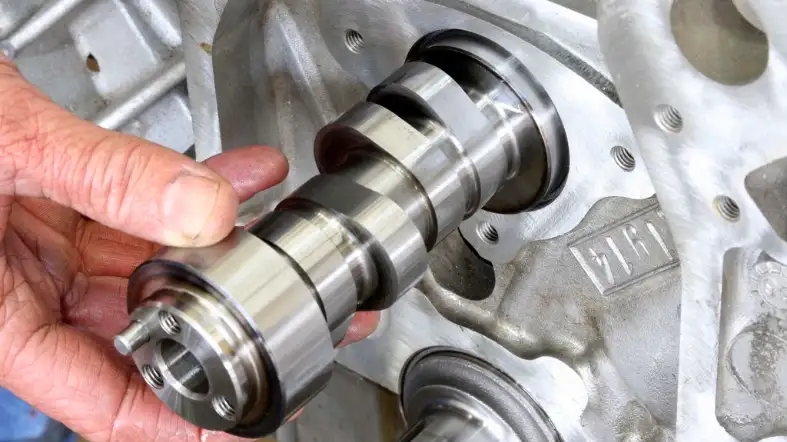If you have recently completed a camshaft swap on your 5.3 engine but aren’t sure what to do next, you need to tune it.
Proper tuning is the key to optimal performance and power.
This article will provide a comprehensive guide to tuning 5.3 engines after a camshaft swap, discussing the tools you’ll need, how to make adjustments, and how to test and monitor the results.
How to Tune a 5.3 After Camshaft Swap?
If you’ve recently completed a camshaft swap on your 5.3 engine, tuning it correctly is crucial to achieving optimal performance.

Tuning involves adjusting the engine’s air/fuel ratio, ignition timing, and other parameters to ensure it runs smoothly and produces maximum power.
Tools and Equipment Needed
Before you start tuning your engine, you will need to have a few tools and equipment on hand. These include:
- Laptop or Tablet with Tuning Software
- Wideband O2 Sensor
- Fuel Pressure Gauge
- Vacuum Gauge
- Timing Light
- Diagnostic Scan Tool
- Dynamometer (Dyno) or Road for Street Tuning
Pre-Tuning Preparation
At first you have to check following to start tuning:
- Checking and adjusting your valve lash
- Checking your ignition timing
- Checking your fuel pressure
- Checking for vacuum leaks
- Installing a wideband O2 sensor
step-by-step guide
Step 1: Install a Wideband O2 Sensor
Before you begin tuning, you’ll need a wideband O2 sensor installed in your exhaust system.
This sensor measures the air/fuel ratio of your engine and sends data to your tuning software, allowing you to make adjustments as needed.
You can either weld a bung into your existing exhaust system or purchase an exhaust system with a bung already installed.
Step 2: Obtain Tuning Software
To properly tune your 5.3 engine, you’ll need tuning software. There are many options on the market, including HP Tuners, EFI Live, and TunerPro.
When selecting software, it is important to consider the specific features of each option in relation to your own particular requirements and financial limitations.
Additionally, in order to interface with your vehicle’s OBD-II port, you will need both a laptop and a USB cable.
Step 3: Make Baseline Pulls
With your O2 sensor installed and tuning software ready, make a few baseline pulls to establish a baseline for your engine’s performance.
This will allow you to compare changes in the tune to see if they result in improvements or not.
Record data such as air/fuel ratio, ignition timing, and engine RPM for each pull.
Step 4: Adjust Air/Fuel Ratio
Using your tuning software, adjust the air/fuel ratio of your engine.
Your target air/fuel ratio will depend on factors such as camshaft specs, fuel injectors, and other modifications.
Generally, you’ll want to aim for a ratio between 12.8:1 and 13.2:1 at wide-open throttle (WOT) for best performance.
Step 5: Adjust Ignition Timing
Next, adjust the ignition timing of your engine.
Ignition timing controls when the spark plugs ignite the fuel mixture, and optimizing this timing can result in improved power and efficiency.
Start by adjusting timing at WOT and work your way down to part throttle. Be cautious not to advance timing too much or risk detonation.
Step 6: Fine-Tune Other Parameters
Finally, fine-tune other parameters such as idle speed, idle air control, and throttle response to optimize your engine’s performance.
Keep making pulls and monitoring the data until you achieve the desired results.
Other Tuning Process After Camshaft Swap
Check out these other process for tuning:

Tuning for Idle
When tuning for idle, you will need to adjust the idle speed and air/fuel ratio. Start by adjusting the idle speed to the manufacturer’s specifications.
Then, adjust the air/fuel ratio to achieve the desired idle quality.
Tuning for Low Speeds
Tuning for low speeds involves adjusting the air/fuel ratio for optimal performance at low RPMs.
Start by setting the throttle position sensor (TPS) to the manufacturer’s specifications.
Then, adjust the air/fuel ratio to achieve the best possible performance at low speeds.
Tuning for Mid-Range Power
Tuning for mid-range power involves adjusting the air/fuel ratio and timing to achieve the best possible performance at mid-range RPMs.
Start by adjusting the timing to the manufacturer’s specifications. Then, adjust the air/fuel ratio to achieve the best possible performance.
Tuning for High RPM Power
Tuning for high RPM power involves adjusting the air/fuel ratio and timing to achieve the best possible performance at high RPMs.
Start by adjusting the timing to the manufacturer’s specifications. Then, adjust the air/fuel ratio to achieve the best possible performance.
Tuning for WOT (Wide Open Throttle)
Tuning for WOT involves adjusting the air/fuel ratio and timing to achieve the best possible performance at full throttle.
Start by adjusting the timing to the manufacturer’s specifications. Then, adjust the air/fuel ratio to achieve the best possible performance.
Dyno Tuning vs. Street Tuning
There are two ways to tune your engine after a camshaft swap: dyno tuning and street tuning.
Dyno Tuning
Dyno tuning is done on a dynamometer, which is a machine that measures your engine’s power output.
Street Tuning
Street tuning, on the other hand, is done while driving your car on the road.
After evaluating the advantages and disadvantages of both approaches, it is advisable to select the technique that is most suitable for your particular circumstances.
Troubleshooting common tuning issues

We’ll go over some of the most common tuning issues and how to troubleshoot them.
Poor Fuel Economy
One of the most common tuning issues is poor fuel economy.
If your automobile is not achieving the expected gas mileage, there are certain aspects that you may examine to identify and address the issue.
First, make sure your air filter is clean. A dirty air filter can cause your engine to work harder, which can lead to poor fuel economy.
Next, check your tire pressure. Low tire pressure can also cause your engine to work harder, which can lead to poor fuel economy.
Finally, check your fuel injectors. If they’re dirty or clogged, they can cause your engine to work harder, which can lead to poor fuel economy.
Engine Misfires
Another common tuning issue is engine misfires. If your engine is misfiring, it can cause a rough idle, poor performance, and even damage to your engine.
The first thing you should check is your spark plugs. If they’re worn or dirty, they can cause misfires. Next, check your ignition coils.
If they’re faulty, they can also cause misfires. Finally, check your fuel injectors. If they’re dirty or clogged, they can cause misfires as well.
Rough Idle
If your vehicle has a rough idle, it can be frustrating to deal with. There are several things that can cause a rough idle.
First, check your spark plugs. If they’re worn or dirty, they can cause a rough idle. Next, check your air filter.
A dirty air filter can also cause a rough idle. Finally, check your fuel injectors. If they’re dirty or clogged, they can cause a rough idle as well.
Lack of Power
If your vehicle is lacking power, it can be a sign of a tuning issue. There are a few things you can check. First, make sure your air filter is clean.
A dirty air filter can cause your engine to work harder, which can lead to a lack of power. Next, check your spark plugs. If they’re worn or dirty, they can also cause a lack of power.
Finally, check your fuel injectors. If they’re dirty or clogged, they can cause a lack of power as well.
Check Engine Light
If your check engine light is on, it can be a sign of a tuning issue. There are many things that can cause the check engine light to come on.
Some common causes include a faulty oxygen sensor, a faulty mass airflow sensor, a faulty catalytic converter, or a faulty spark plug.
If your check engine light is on, it’s important to have it diagnosed as soon as possible.
FAQ
Is It Necessary To Tune Your Engine After A Camshaft Swap?
Yes, tuning your engine after a camshaft swap is essential for getting the most power and performance out of your vehicle.
What Tools And Equipment Do I Need For Tuning My Engine?
You will need a laptop or tablet with tuning software, a wideband O2 sensor, fuel pressure gauge, vacuum gauge, timing light, diagnostic scan tool, and a dynamometer or road for street tuning.
How Do I Choose The Right Camshaft For My Engine?
The right camshaft depends on factors like engine displacement, compression ratio, exhaust system, and the intended use of the vehicle.
Consult with a professional to determine which camshaft will work best for your specific engine and driving needs.
Can I Tune My Engine Myself?
Although it is feasible to perform engine tuning independently, it is recommended to seek the guidance of an expert to ensure that your engine is precisely tuned.
How Often Should I Perform Maintenance On My Engine?
It is recommended to perform regular maintenance on your engine, including checking and adjusting your valve lash, changing your oil and oil filter regularly, and performing regular tune-ups.
The frequency of maintenance will depend on your specific driving habits and
Conclusion
Tuning your engine after a camshaft swap is essential for getting the most power and performance out of your vehicle.
By following the steps outlined in this article, you can ensure that your 5.3 engine is running at its best.
Remember to test and monitor your engine regularly, and perform regular maintenance and upkeep to keep it running smoothly.
